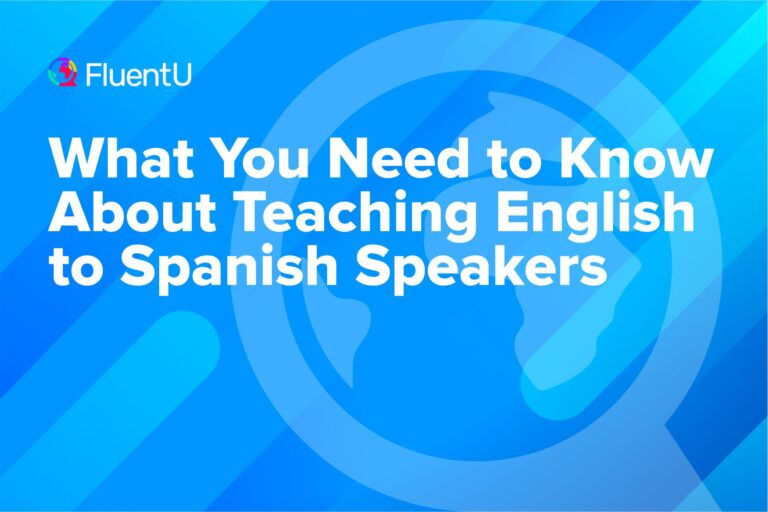How to Combine ESL and Math in Your Classes

Teaching two subjects at once isn’t the juggling act it sounds like. In fact, experts often agree that teaching another subject is an effective way to enhance ESL teaching. The literature surrounding Content and Language Integrated Learning (CLIL) details how language is used in CLIL contexts to learn and communicate—something you should be very mindful of as an ESL math teacher.
As long as you have the tools you need to succeed, teaching math and ESL together can be an incredibly rewarding experience—both for you and your students.
Download: This blog post is available as a convenient and portable PDF that you can take anywhere. Click here to get a copy. (Download)
How to Teach Math to ESL Beginners
Start with key vocabulary for beginners
Beginner ESL math should begin with a short and straightforward vocabulary lesson. After all, your students need to fully understand these words to solve even the most basic of problems.
Introduce this vocabulary as early as possible, and be sure to come back to it often. You may even want to post oft-used words somewhere on your classroom wall for easy access, such as:
- Number words, including cardinal (three) and ordinal (third) forms
- Words related to basic mathematical operations:
- Addition, add, sum, plus
- Subtraction, subtract, difference, minus
- Multiplication, multiply, product, times
- Division, divide, quotient
- Equals
Write problems using both the signs and words for the operations involved first, then do it the other way around
You can do this yourself, or invite your students to add one or the other.
For example, a worksheet could include the following problem:
Four plus six equals
The student would then have to write out the problem as follows before solving it:
4 + 6 =
As students become more advanced, write the problems the opposite way, making the students responsible for transcribing the mathematical symbols into English before solving the problem.
Use math games and activities suitable for beginners
Some of the best ways to reinforce your students’ newly acquired skills include games and activities. Here are a few of my favorites:
- Zip, Zap, Zop. For example, if you’re teaching factors, choose an integer—nine, for example—and have students count in a circle. When a number with the number nine in it (such as 19 or 29) is said, the student who’s supposed to say 19 (or 29) will instead say “Zip!” and point to another student. The counting then continues again. Similarly, students landing on factors of nine, such as three, will say “Zap!,” and students landing on numbers for which nine is a divisor, like 27, will say “Zop.”
- Bugabaloo. This online math game with pictures can be a fun way to use computers in the classroom with younger learners. It’s also very accessible for complete beginners in both math and ESL.
- Math BINGO. Math BINGO is another great game for beginners. You can make math BINGO cards in your classroom with different integers in each of the boxes, and allow different students to be the caller. Just be sure you check students’ work along the way, so faulty math doesn’t creep into this fun game.
How to Teach Math to Intermediate ESL Learners
At this stage, you can level up the vocabulary you use with your students, and use words as much as numbers.
Give your students a list of keywords
For example, you can give them a worksheet and have them associate words with the four primary operations:
Addition: sum, plus, and, with, add
Subtraction: minus, difference, lose, remove, take away
Multiplication: times, product, by, multiply, groups
Division: divide, quotient, of, divide
Use simple, declarative sentences for word problems
Math is complicated enough on its own. Your ESL students will have a much easier time solving problems if the ideas are presented in simple, declarative sentences.
For example, instead of saying, “If Farmer John has three pigs and two sheep, and both of the sheep have a lamb, how many animals does he have on the farm?,” say, “Farmer John has three pigs, two sheep and two baby sheep (lambs). How many animals are on the farm?”
Help your intermediate learners visualize the math with games
Some exercises your students can do in this vein include:
- Illustrating word problems. Once students have mastered word problems, try helping them write and illustrate their own!
- Matching game. This geometry matching game is a fantastic way for intermediate learners to brush up on their definitions.
- Drawing with a partner. Increase your intermediate students’ spatial awareness by having them draw a picture and hide it from their partner. Any picture can be used, but encourage them to use geometrical shapes they know the names of, such as square, rectangle, circle and triangle.
A student may choose to draw a house and a yard with these shapes. Once the drawing is completed, each student describes the picture they drew, using words both students know. For example, “Draw a square in the center of the page with 4-inch sides, about 1 inch from the bottom. Draw an isosceles triangle on top, with the longest side adjacent to the top edge of the square.”
As the student describes their picture, their partner will attempt to replicate it. Encourage students to use words like “parallel,” “perpendicular,” “at a right angle to,” “equilateral,” “diameter” and any other geometrical words you may have introduced in class.
How to Teach Math to Advanced ESL Learners
Teaching math to advanced ESL learners can be a real joy. Once they’re at that level, logic and language interact in such a way as to give students the tools to begin to really think in English.
Emphasize theory and logic-related math
As advanced students begin working on more complex word problems in English, you can begin introducing linguistic elements with relative clauses, such as:
In six years, Carl’s father will be twice as old as Carl will be next year. When Carl’s age is added to his father’s age, the total is 42. How old are Carl and his father?
These sorts of problems force students to understand all of the information presented before they can even begin, and also help students to work with algebraic equations.
Start to use resources used in standard math classes
Once your ESL students are at an advanced level, you can use nearly any math resource with them. Just make sure to always provide them with the tools they need.
For example, while many languages use a variation of Latin terms when it comes to algebraic and geometric vocabulary, it’s always a good idea to go through the vocab before beginning a unit pertaining to either of these topics.
Don’t neglect the fun
Just because your students are now at the advanced level doesn’t mean you can no longer inject games and creativity into your lessons.
You can still make use of activities like:
- Interesting number facts. Let your advanced learners use these math facts to combine reading comprehension in English with their newly acquired numerical skills.
- Age problems. This site of age problems is likewise a nice resource for practicing.
- Prisoner hat puzzle. This hat problem is more logic than math related, but it can be a fun problem to work on as a group.
- Permutations. These exercises are excellent for introducing permutations.
General Tips for All Levels
No matter what level you’re teaching, it’s good to remember a few basic rules:
- Teach based on what your students know. In other words, use words your students already know when introducing a new math concept, or review concepts your students are already familiar with when teaching new English vocabulary. As much as possible, avoid introducing new math concepts and new vocabulary at the same time. If you can’t avoid this, do so slowly and be sure to spend an adequate amount of time covering all of the new material.
- Talk about the new concepts out loud. As you work through the math, explain what you’re doing as you do it, and use the same vocabulary each time whenever possible. For example, you can say, “I’m adding all of the integers in the ones column. I’m carrying the 1 …” This allows students to access the words they need to solve problems and explain where they went wrong if needed.
- Use visual aids if they help. These could be pictures, blocks, diagrams or even videos. You can also search for math-related clips on FluentU so it’s relevant to the lesson.
FluentU takes authentic videos—like music videos, movie trailers, news and inspiring talks—and turns them into personalized language learning lessons.
You can try FluentU for free for 2 weeks. Check out the website or download the iOS app or Android app.
P.S. Click here to take advantage of our current sale! (Expires at the end of this month.)

- Invite students to participate. Ask them to answer questions and solve problems by themselves as much as they can. The more your students can participate during class, the more they can work on the problems on their own during homework assignments, quizzes and tests.
As always, be sure to let the level of your students dictate your lessons as much as possible. If you realize that students are already adept at simple word problems, offer them more advanced ones to tackle. If the vocabulary of some of your students is lacking, try some vocab exercises before moving on to more advanced math.
By allowing English and math knowledge to build upon one another in the classroom, your experience—and that of your ESL students—will only be richer.
Download: This blog post is available as a convenient and portable PDF that you can take anywhere. Click here to get a copy. (Download)
And One More Thing...
If you like learning English through movies and online media, you should also check out FluentU. FluentU lets you learn English from popular talk shows, catchy music videos and funny commercials, as you can see here:
The FluentU app and website makes it really easy to watch English videos. There are captions that are interactive. That means you can tap on any word to see an image, definition, and useful examples.
For example, when you tap on the word "searching," you see this:
Learn all the vocabulary in any video with quizzes. Swipe left or right to see more examples for the word you’re learning.

FluentU helps you learn fast with useful questions and multiple examples. Learn more.
The best part? FluentU remembers the vocabulary that you’re learning. It gives you extra practice with difficult words—and reminds you when it’s time to review what you’ve learned. You have a truly personalized experience.
Start using the FluentU website on your computer or tablet or, better yet, download the FluentU app from the iTunes or Google Play store. Click here to take advantage of our current sale! (Expires at the end of this month.)











